- Resource recovery
- Fertiliser, soil conditioner, production of crops
- What is the difference between soil and compost? And the importance of soil
What is the difference between soil and compost? And the importance of soil
26.6k views
- DaveBates
-
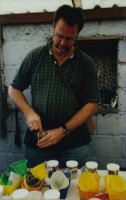 Less
Less- Posts: 49
- Likes received: 17
Re: Fwd: [SuSanA forum] What is the difference between soil and compost? Results from a twitter conversation with Joe and Susi (Composting processes)
Joe:
I made the post a long time ago, but was sent to the wrong place.
As far as there being "competition" for the lime, I see it different.
If there is an acidic soil that this treated waste could be applied to, the use of the lime in this bathroom, would better ensure the main purpose of the toilet (to eliminate pathogens), and then applying the treated waste to the soil afterwards, would give the lime a second use.
If a farmer actually needs lime for his soils, then of course he has to get a different supply of lime. In this area, quick lime was in abundance. It has to be considered a part of the cost of operation. Wood ash could be used as a substitute.
Let's keep up the dialogue.
David
I made the post a long time ago, but was sent to the wrong place.
As far as there being "competition" for the lime, I see it different.
If there is an acidic soil that this treated waste could be applied to, the use of the lime in this bathroom, would better ensure the main purpose of the toilet (to eliminate pathogens), and then applying the treated waste to the soil afterwards, would give the lime a second use.
If a farmer actually needs lime for his soils, then of course he has to get a different supply of lime. In this area, quick lime was in abundance. It has to be considered a part of the cost of operation. Wood ash could be used as a substitute.
Let's keep up the dialogue.
David
Please Log in to join the conversation.
You need to login to reply- joeturner
-
 Less
Less- Posts: 717
- Karma: 23
- Likes received: 185
Re: What is the difference between soil and compost? And the importance of soil.
I think all this goes to show is that getting a useful amount of soil science knowledge is more complicated than it might first appear* and at least as complicated as studying for an undergraduate degree in engineering.
*but not impossible! I would strongly encourage anyone considering studying and getting more knowledge on the subject to do so. But just don't imagine that you'll be able to get much useful soil knowledge in an afternoon, it is hard work**.
**well, it was for me, and to be honest we soil scientists are not the brightest sparks
*but not impossible! I would strongly encourage anyone considering studying and getting more knowledge on the subject to do so. But just don't imagine that you'll be able to get much useful soil knowledge in an afternoon, it is hard work**.
**well, it was for me, and to be honest we soil scientists are not the brightest sparks
The following user(s) like this post: Elisabeth
Please Log in to join the conversation.
You need to login to reply- Elisabeth
-
Topic Author
- User is blocked
- Freelance consultant since 2012
Less- Posts: 3372
- Karma: 54
- Likes received: 932
Re: What is the difference between soil and compost? Results from a twitter conversation with Joe and Susi
OK, I am admitting it: I know next to nothing about soil, even though I talk about it all the time (how reuse of excreta can increase soil fertility etc...). What has made me realise this recently?
Well, reading through this thread but also reading the tweets that are coming out because it's International Year of Soil this year.
FAO has put up a nice 2 minute video about soil: An animated introduction to soils functions and threats.
They pointed out that: Soil is a non-renewable resource, its loss and degradation is not recoverable within a human lifespan.
So I've realised that apart from everything else (climate change, water pollution, peak oil...), I now also have to start worrying about loss and degradation of soil.
The video does also mention composting of organic household matter:
"Up to half of our household waste could be composted to nurture our soil."
This is where we as sanitation people come in! I know they are talking about food waste when they say "household waste" but we may expand that to human excreta - with of course the added risks of pathogens which have to be managed.
Anyway, I thought I might share this little video with you as well as my learning curve.
Well, reading through this thread but also reading the tweets that are coming out because it's International Year of Soil this year.
FAO has put up a nice 2 minute video about soil: An animated introduction to soils functions and threats.
They pointed out that: Soil is a non-renewable resource, its loss and degradation is not recoverable within a human lifespan.
So I've realised that apart from everything else (climate change, water pollution, peak oil...), I now also have to start worrying about loss and degradation of soil.
The video does also mention composting of organic household matter:
"Up to half of our household waste could be composted to nurture our soil."
This is where we as sanitation people come in! I know they are talking about food waste when they say "household waste" but we may expand that to human excreta - with of course the added risks of pathogens which have to be managed.
Anyway, I thought I might share this little video with you as well as my learning curve.
Dr. Elisabeth von Muench
Freelance consultant on environmental and climate projects
Freelance consultant on environmental and climate projects
Please Log in to join the conversation.
You need to login to replyRe: What is the difference between soil and compost? Results from a twitter conversation with Joe and Susi
Thanks for asking for SOIL's input Elisabeth! Although we do have some SOILies with more formal soil science backgrounds in general we take a gentler approach to definitions at SOIL. We think of soil as the medium from which all life stems and compost as an organic substance that increases soil's potential to support other living organisms. Although we acknowledge and respect the definitions used by soil scientists, we find that having a more philosophical understanding of soil helps us to promote our mission to our supporters and the communities in which we work.
Soil in SOIL's philosophy:
In nature soil transforms organic matter, sustaining ecological systems by converting one organism’s wastes into another’s resources. It is from the soil that our organization has borrowed both our name and our philosophy. We too, believe that the path to sustainability is through transformation, of both marginalized people and discarded materials, turning disempowerment and pollution into participatory production. To read more about our philosophy click here .
Soil in SOIL's philosophy:
In nature soil transforms organic matter, sustaining ecological systems by converting one organism’s wastes into another’s resources. It is from the soil that our organization has borrowed both our name and our philosophy. We too, believe that the path to sustainability is through transformation, of both marginalized people and discarded materials, turning disempowerment and pollution into participatory production. To read more about our philosophy click here .
Posted by the SOIL Team based in Haiti since 2006. Find more information about SOIL at:
Website: www.oursoil.org
Facebook: www.facebook.com/SOILHaiti
Twitter: @SOILHaiti.
Website: www.oursoil.org
Facebook: www.facebook.com/SOILHaiti
Twitter: @SOILHaiti.
Attachments:
-
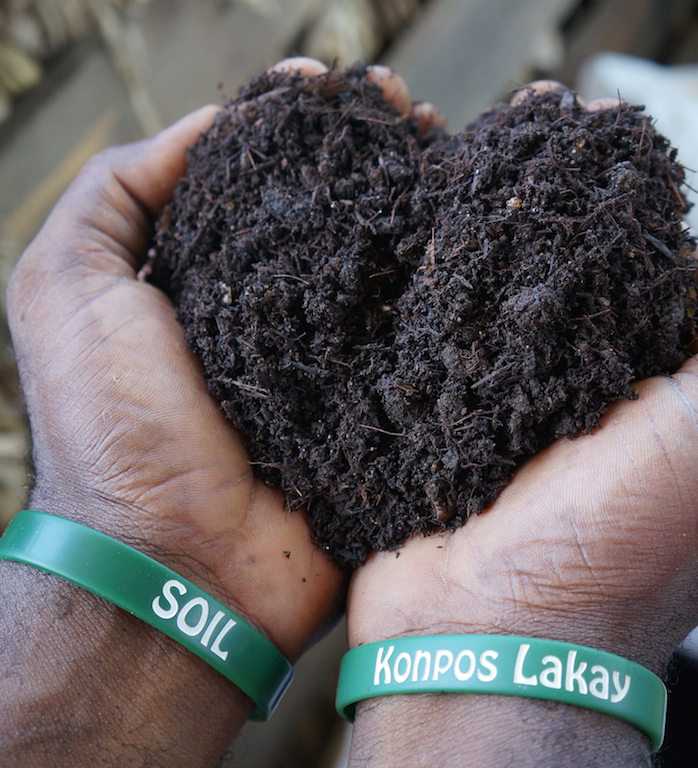 9-CompostH...copy.jpg
(Filesize: 651KB)
9-CompostH...copy.jpg
(Filesize: 651KB)
The following user(s) like this post: SusannahSoilet
Please Log in to join the conversation.
You need to login to reply- DaveBates
-
 Less
Less- Posts: 49
- Likes received: 17
Re: What is the difference between soil and compost? Results from a twitter conversation with Joe and Susi
Finally this picture shows that make up you speak of soil, being not only minerals (45% per this illustration), but organic matter also (5%), which still only makes up half of the soil.
The other half being 25% water(and dissolved nutrients) and 25% air....showing the importance of having the "optimum moisture content"(OMC) and ability to turn the compost pile or soil, (mixing) to achieve aeration....in the case of a compost pile or "compost toilet" (our interest). Of course in the soil, the microbes & insects provide for some of this aeration.
Note that the author shows for the minerals an equal split between sand(40%) and silt(40%) for a typical good soil, with clay(20%) having half their amounts.
So my point in these slides are these show the part organic matter has in soil (1-6%), and its phases, and the typical make up of a good agricultural soil in relation to the minerals we were discussing soil texture triangle.
All this has implications for not using the word "soil" for the end product of a UDDT (a different thread) and a basis to understand the difference between soil and compost. So we need to now know what "compost" is to answer that question.
Joe...please go ahead and fine tune whatever blunders I have made in these simplifications of my quick interpretations of these graphics.
www.google.com/search?site=&tbm=isch&sou...oil%252F%3B501%3B363
The other half being 25% water(and dissolved nutrients) and 25% air....showing the importance of having the "optimum moisture content"(OMC) and ability to turn the compost pile or soil, (mixing) to achieve aeration....in the case of a compost pile or "compost toilet" (our interest). Of course in the soil, the microbes & insects provide for some of this aeration.
Note that the author shows for the minerals an equal split between sand(40%) and silt(40%) for a typical good soil, with clay(20%) having half their amounts.
So my point in these slides are these show the part organic matter has in soil (1-6%), and its phases, and the typical make up of a good agricultural soil in relation to the minerals we were discussing soil texture triangle.
All this has implications for not using the word "soil" for the end product of a UDDT (a different thread) and a basis to understand the difference between soil and compost. So we need to now know what "compost" is to answer that question.
Joe...please go ahead and fine tune whatever blunders I have made in these simplifications of my quick interpretations of these graphics.
www.google.com/search?site=&tbm=isch&sou...oil%252F%3B501%3B363
Attachments:
-
 Goodgardensoil.png
(Filesize: 7KB)
Goodgardensoil.png
(Filesize: 7KB)
Please Log in to join the conversation.
You need to login to reply- DaveBates
-
 Less
Less- Posts: 49
- Likes received: 17
Re: What is the difference between soil and compost? Results from a twitter conversation with Joe and Susi
Now this graph shows that the ORGANIC MATTER portion is typically 1-6% (per this author) of the total soil matter. So when we talk of a soil....we should expect to see some reasonable range of organic matter if it is a ....."good".... soil (perhaps from the agronomic standpoint)
www.google.com/search?site=&tbm=isch&sou...nce.html%3B500%3B357
www.google.com/search?site=&tbm=isch&sou...nce.html%3B500%3B357
Attachments:
-
 Organicmat...tter.jpg
(Filesize: 29KB)
Organicmat...tter.jpg
(Filesize: 29KB)
Please Log in to join the conversation.
You need to login to reply- DaveBates
-
 Less
Less- Posts: 49
- Likes received: 17
Re: What is the difference between soil and compost? Results from a twitter conversation with Joe and Susi
Jan:
The graphs were just meant to clarify items Joe and I were discussing....the profiles to clarify what is a soil profile vs. the USDA soil texture triangle (I slipped and called the triangle a profile !). Most of the others were to emphasize the live and variable nature of soil that Joe was speaking of. After these few posts, I will let you soil experts interpret these further.
and called the triangle a profile !). Most of the others were to emphasize the live and variable nature of soil that Joe was speaking of. After these few posts, I will let you soil experts interpret these further.
The most interesting attachment to me and most pertinent to our discussion with implications to those that consider that UDDTs or UDT's are composting toilets is this picture here which is one google images author's representation of the composition of soil organic matter*.
Note there is the "fresh (plant) residue" (10%, then the active decomposing organic matter (33-50%), then finally stabilized organic matter (humus) (33-50%) , all helped along by the living organisms (5%).
This helps to show what this author is implying is one make-up of the stages of plant matter decay into the intermediate & final ORGANIC MATTER stages.....which I will show next it's part in "soil".
*I plan to upload two more figures to further this point along to show you where I am going with this thought.
www.google.com/search?site=&tbm=isch&sou...dweb.cfm%3B478%3B393
The graphs were just meant to clarify items Joe and I were discussing....the profiles to clarify what is a soil profile vs. the USDA soil texture triangle (I slipped
The most interesting attachment to me and most pertinent to our discussion with implications to those that consider that UDDTs or UDT's are composting toilets is this picture here which is one google images author's representation of the composition of soil organic matter*.
Note there is the "fresh (plant) residue" (10%, then the active decomposing organic matter (33-50%), then finally stabilized organic matter (humus) (33-50%) , all helped along by the living organisms (5%).
This helps to show what this author is implying is one make-up of the stages of plant matter decay into the intermediate & final ORGANIC MATTER stages.....which I will show next it's part in "soil".
*I plan to upload two more figures to further this point along to show you where I am going with this thought.
www.google.com/search?site=&tbm=isch&sou...dweb.cfm%3B478%3B393
Attachments:
-
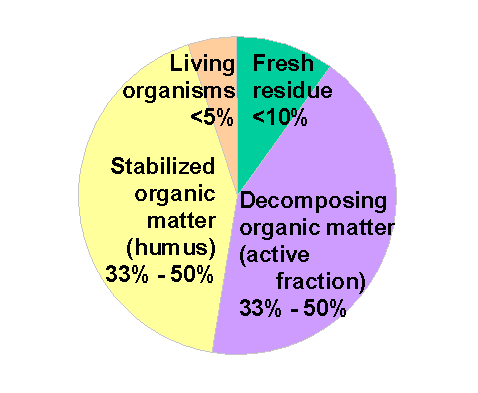 Soilfoodweb.gif
(Filesize: 8KB)
Soilfoodweb.gif
(Filesize: 8KB)
Please Log in to join the conversation.
You need to login to reply- jankn
-
 Less
Less- Posts: 35
- Karma: 8
- Likes received: 21
Re: What is the difference between soil and compost? Results from a twitter conversation with Joe and Susi
Thanks David for the graphs. Could you shortly explain a bit more what the single images you uploaded represent?
Just to add a few clarifications on the soil textures mentioned:
The soil texture triangle presented by David is indeed used in many engineering, soil science, and soil physics modeling applications (as Joe also pointed out). However, loam by itself is not a constituent of soil, but rather defines a category of soil texture within the triangle where the three constituents sand, silt, and clay are in a rather balanced mix. That is the reason why loams are generally in the "middle" of the triangle.
Also, the triangle presented is the one that represents the nomenclature standards of the U.S. Department of Agriculture (USDA). However, there are numerous ways to define soil textural classes, that differ in various variables; other common classifications would maybe be the European Soil Map (HYPRES), the German Bodenartendiagramm, the French ’GEPPA’, or the UK Soil Survey of England and Wales texture classification. This is not a perfect system and might lead to a certain degree of confusion, if terms in certain systems overlap (e.g. a UK 'clay loam' could be a USDA 'clay loam' or 'loam' or 'silt loam').
But the hole things is basically just a naming exercise, and there are important shortcomings in those classifications. Firstly, as mentioned earlier, it only represents the mineral fraction of a soil, and secondly, is disregards any particles in the soil matrix that are larger than sand particles (i.e. gravel and bigger). Both of which can, depending on their abundance in the soil, alter its physical and hydrological properties tremendously.
However, basic soil properties such as bulk density, saturated water content, water content at wilting point, and hydraulic conductivity could be inferred from those textural classes.
Just to add a few clarifications on the soil textures mentioned:
The soil texture triangle presented by David is indeed used in many engineering, soil science, and soil physics modeling applications (as Joe also pointed out). However, loam by itself is not a constituent of soil, but rather defines a category of soil texture within the triangle where the three constituents sand, silt, and clay are in a rather balanced mix. That is the reason why loams are generally in the "middle" of the triangle.
Also, the triangle presented is the one that represents the nomenclature standards of the U.S. Department of Agriculture (USDA). However, there are numerous ways to define soil textural classes, that differ in various variables; other common classifications would maybe be the European Soil Map (HYPRES), the German Bodenartendiagramm, the French ’GEPPA’, or the UK Soil Survey of England and Wales texture classification. This is not a perfect system and might lead to a certain degree of confusion, if terms in certain systems overlap (e.g. a UK 'clay loam' could be a USDA 'clay loam' or 'loam' or 'silt loam').
But the hole things is basically just a naming exercise, and there are important shortcomings in those classifications. Firstly, as mentioned earlier, it only represents the mineral fraction of a soil, and secondly, is disregards any particles in the soil matrix that are larger than sand particles (i.e. gravel and bigger). Both of which can, depending on their abundance in the soil, alter its physical and hydrological properties tremendously.
However, basic soil properties such as bulk density, saturated water content, water content at wilting point, and hydraulic conductivity could be inferred from those textural classes.
Jan Knappe
Doctoral Researcher on environmental performance assessment and modeling of on-site wastewater treatment systems
Trinity College Dublin & University of Limerick
Email: jan.knappe(at)tcd.ie, Twitter: @JanKnappe
Doctoral Researcher on environmental performance assessment and modeling of on-site wastewater treatment systems
Trinity College Dublin & University of Limerick
Email: jan.knappe(at)tcd.ie, Twitter: @JanKnappe
Please Log in to join the conversation.
You need to login to reply- DaveBates
-
 Less
Less- Posts: 49
- Likes received: 17
Re: What is the difference between soil and compost? Results from a twitter conversation with Joe and Susi
Joe:
These show some of the processes going on in the soil, and the "live" nature of the soil that you referred to previously.
David
These show some of the processes going on in the soil, and the "live" nature of the soil that you referred to previously.
David
Attachments:
-
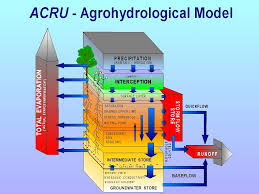 Agrohydrol...file.jpg
(Filesize: 14KB)
Agrohydrol...file.jpg
(Filesize: 14KB)
-
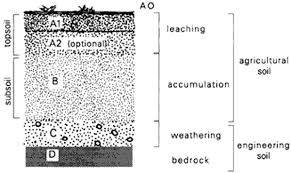 Profilesho...sses.jpg
(Filesize: 11KB)
Profilesho...sses.jpg
(Filesize: 11KB)
-
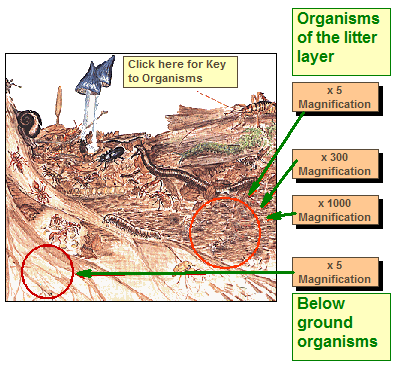 LivingOrga...ayer.png
(Filesize: 118KB)
LivingOrga...ayer.png
(Filesize: 118KB)
-
 Soilfoodweb.gif
(Filesize: 8KB)
Soilfoodweb.gif
(Filesize: 8KB)
Please Log in to join the conversation.
You need to login to reply- DaveBates
-
 Less
Less- Posts: 49
- Likes received: 17
Re: What is the difference between soil and compost? Results from a twitter conversation with Joe and Susi
Joe: Here is one pic showing that variability you were mentioning.
Attachments:
-
 EEuropeanp...lity.jpg
(Filesize: 19KB)
EEuropeanp...lity.jpg
(Filesize: 19KB)
Please Log in to join the conversation.
You need to login to reply- DaveBates
-
 Less
Less- Posts: 49
- Likes received: 17
Re: What is the difference between soil and compost? Results from a twitter conversation with Joe and Susi
Joe:
I agree with your statements. You are obviously very good & precise at expressing the proper soil-related terms.....I think it would be great if you could be the moderator of a thread on a topic of your choice that would benefit the forum on the issues we have been discussing online and offline.
thanks for your direction on this stuff that us non-soil experts just call "dirt" sometimes !
I am going to upload some pics to clarify some of the issues brought up and correct my previous mis-us of "profile".
David
I agree with your statements. You are obviously very good & precise at expressing the proper soil-related terms.....I think it would be great if you could be the moderator of a thread on a topic of your choice that would benefit the forum on the issues we have been discussing online and offline.
thanks for your direction on this stuff that us non-soil experts just call "dirt" sometimes !
I am going to upload some pics to clarify some of the issues brought up and correct my previous mis-us of "profile".
David
Attachments:
-
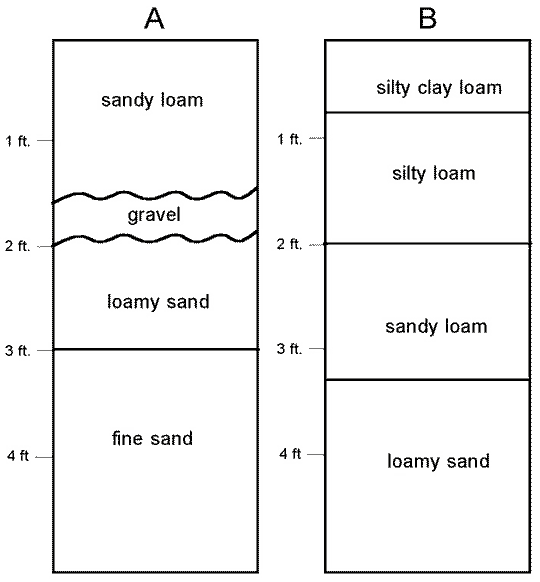 SoilProfil...ypes.gif
(Filesize: 13KB)
SoilProfil...ypes.gif
(Filesize: 13KB)
-
 Profilesho...sses.jpg
(Filesize: 11KB)
Profilesho...sses.jpg
(Filesize: 11KB)
-
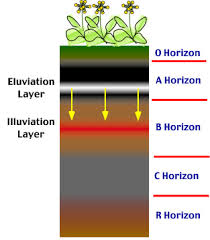 Profilebyh...ions.jpg
(Filesize: 10KB)
Profilebyh...ions.jpg
(Filesize: 10KB)
-
 Profilewde...zins.jpg
(Filesize: 13KB)
Profilewde...zins.jpg
(Filesize: 13KB)
Please Log in to join the conversation.
You need to login to reply- joeturner
-
 Less
Less- Posts: 717
- Karma: 23
- Likes received: 185
Re: What is the difference between soil and compost? Results from a twitter conversation with Joe and Susi
Unfortunately there is a bit of a problem - because the term 'soil' means several different things. In the context David is using above, "soil" means soil texture. This is not really a correct way to try to define soils, but really a facet of a soil, comparable to describing the sharpness of a knife.
So we might say that the soils in a field were predominantly clay. This is shorthand, because soils vary considerably spatially.
But, (again!) unfortunately, soil classification is also the wrong term and refers to something else. And soils can be organic, if they are composed of a large amount of organic material. The point is that you don't use this triangle, because it is only relevant for mineral soils - other soils exist.
Again, I appreciate this sounds very technical and boring, but this is the way it is. Soil Science is more complicated than many think!
On the fertility point, I would say that David's sample would be hard to apply in amounts which would not give a negative effect on the fields he has to spread them on. Too much would likely have a negative effect.
But the main problem (other than the pH) is that those particular soils are already pretty high in nitrogen, so adding more is not going to be doing anything anyway. Crop growth is not going to be limited by nitrogen.
If there was really a problem with acid soils, then one would be better off using the lime directly on the soil rather than in the latrine (of course, this is not ideal given the need for sanitation, so there is a conflict).
So we might say that the soils in a field were predominantly clay. This is shorthand, because soils vary considerably spatially.
But, (again!) unfortunately, soil classification is also the wrong term and refers to something else. And soils can be organic, if they are composed of a large amount of organic material. The point is that you don't use this triangle, because it is only relevant for mineral soils - other soils exist.
Again, I appreciate this sounds very technical and boring, but this is the way it is. Soil Science is more complicated than many think!
On the fertility point, I would say that David's sample would be hard to apply in amounts which would not give a negative effect on the fields he has to spread them on. Too much would likely have a negative effect.
But the main problem (other than the pH) is that those particular soils are already pretty high in nitrogen, so adding more is not going to be doing anything anyway. Crop growth is not going to be limited by nitrogen.
If there was really a problem with acid soils, then one would be better off using the lime directly on the soil rather than in the latrine (of course, this is not ideal given the need for sanitation, so there is a conflict).
Please Log in to join the conversation.
You need to login to reply
Share this thread:
- Resource recovery
- Fertiliser, soil conditioner, production of crops
- What is the difference between soil and compost? And the importance of soil
Recently active users. Who else has been active?
Time to create page: 0.259 seconds







